The outlying islands of Scotland are not part of the larger archipelagos and island groups of Scotland—the Hebrides, the Northern Isles or the Islands of the Forth and Clyde estuaries. None of these islands are currently inhabited and few of them ever were, although Hirta was occupied from the Neolithic age until 1930 and Stroma was permanently occupied until the 1970s and thereafter by lighthouse keepers and their families until 1996.[1][2] Several other outlying islands have lighthouses, none of which is still staffed.
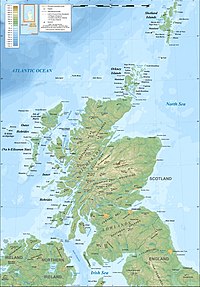

In this list, an island is defined as "land that is surrounded by seawater on a daily basis, but not necessarily at all stages of the tide, excluding human devices such as bridges and causeways".[Note 1] A complication relating to membership of this list is that there are various descriptions of the scope of the Hebrides, the large group of islands that lie off Scotland's west coast. The Collins Encyclopedia of Scotland describes the Inner Hebrides as lying "east of The Minch", which would include any and all offshore islands. There are various islands that lie in the sea lochs such as Eilean Bàn and Eilean Donan that might not ordinarily be described as "Hebridean" but no formal definitions exist and for simplicity they are included in the List of Inner Hebrides rather than here.[5]
Main islands


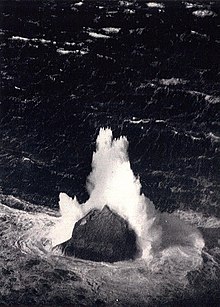





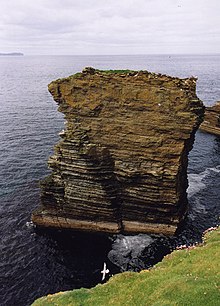

There are several small groupings of outlying islands involved. The most significant of these is the St Kilda archipelago[Note 2] which lies 64 kilometres (40 mi) west-northwest of North Uist and is now a World Heritage Site. It is one of the few to hold joint status for its natural and cultural qualities.[8][Note 3] At 196 metres (643 ft) Stac an Armin is the highest sea stack in the British Isles[10][11][12] and in July 1840, the last great auk seen in the British Isles was captured there.[13]
East of St Kilda are the Flannan Isles, where all three lighthouse keepers mysteriously vanished without trace in December 1900.[14] Further north and east are the two outliers of Sula Sgeir and North Rona, which have strong cultural links to the Outer Hebrides. North Rona is 71 kilometres (44 mi) north north east of Butt of Lewis and 18 kilometres (11 mi) east of Sula Sgeir. It is the remotest island in the British Isles ever to have been inhabited on a long-term basis. It is also closer than any other part of Scotland to the Faroe Islands. Sule Skerry and Sule Stack lie further east and are administratively part of Orkney.
The islands of the north coast are remote from the main centres of population, although they mostly lie close to the mainland. There is a small group of larger islands near Tongue Bay, but the largest on this coast is Stroma in the Pentland Firth, between Caithness and Orkney. Innis Mhòr in the Dornoch Firth is the largest of a handful of small islets off the coast of Easter Ross. Further south are Inchcape off the coast of Angus, and Mugdrum, the only substantial island in the Firth of Tay. There is a cluster of islands in the Solway Firth that marks the south western border of Scotland, including the Islands of Fleet, in Wigtown Bay.
Most of the smaller islets that surround those in the main list are obscure and none have been permanently inhabited in modern times. Nonetheless, some have a degree of historical significance. Castle Mestag off Stroma is the ruins of a once fortified stack accessible only via a drawbridge.[15][Note 4] Some islets are identified as "storm washed", meaning that although they are partly above mean sea level, large waves wash over the top of them during storms, rendering them uninhabitable.
Finally, there is remote Rockall, which is 367 kilometres (228 mi) to the west of North Uist. It is a small rocky islet in the North Atlantic which could be, in James Fisher's words, "the most isolated small rock in the oceans of the world"[17][Note 5] and which was declared part of Scotland by the Island of Rockall Act 1972.[19][20] However, the legality of the claim is disputed by the Republic of Ireland, Denmark and Iceland and it is probably unenforceable in international law.[21][22] [Note 6]
| Island | Group | Area (ha)[24] | Height (m) [25] [Note 7] | Light [Note 8] | Last inhabited[Note 9] | Surrounding islets |
|---|---|---|---|---|---|---|
| Ardwall Isle | Islands of Fleet | 22 | 34 | No | 18th century?[Note 10] | Old Man of Fleet |
| Barlocco Isle | Islands of Fleet | 10 | 10 | No | Inhabitation unlikely | The Three Brethren |
| Big Scare | Solway Firth[28] | <1 | 21[29] | No | Inhabitation very unlikely | Little Scares (3) |
| Boreray | St Kilda | 77 | 384 | No | Iron Age?[Note 11] | An t-Sail, Sgarbhstac |
| Bròna Cleit | Flannan Isles | 1 | c. 20 | No | Inhabitation very unlikely | None |
| Dùn | St Kilda | 32[32] | 178 | No | Unknown[Note 12] | Hamalan, Giasgeir, Sgeir Cul an Rubha, Sgeir Mhòr |
| Eilean a' Ghobha | Flannan Isles | 8 | 57 | No | Inhabitation very unlikely | None |
| Eilean Choraidh | Loch Eriboll | 26[34] | 26 | No | 1930s | A' chlèit |
| Eilean Hoan | Loch Eriboll | 28[34] | 25 | No | Early 1800s[35] | A' Ghoil-sgeir, An Cruachan, An Dubh-sgeir, Eilean Clùimhrig, Pocan Smoo |
| Eilean Mòr | Flannan Isles | 17.5[36][Note 13] | 88 | Yes | 1971[38] | Deirc na Sgeir, Làmh à Sgeir Beag, Làmh an Sgeir Mòire |
| Eilean nan Ròn | Tongue Bay | 138 | 76 | No | 1930s or 40s[Note 14] | An Innis, Eilean Iosal, Meall Thailm |
| Eilean Taighe | Flannan Isles | 11 | 59 | No | Unknown[Note 15] | Gealtaire Beag, Gealtaire Mòr, Hamasgeir |
| Hestan Island | Solway Firth | c.11 | 54 | Yes | Unknown[Note 16] | None |
| Hirta | St Kilda | 670 | 430 | No | 1930 | An Torc, Bradastac, Mina Stac, Sgeir Domhnuill, Sgeir Mhòr, Sgeir nan Sgarbh |
| Inchcape | Angus coast | 0.61[41] | 0[Note 17] | Yes | 1988[Note 18] | None |
| Innis Mhòr | Easter Ross | 26 | <5 | No | Shifting sands | None[Note 19] |
| Little Ross | Solway Firth | 7 | 35 | Yes | Inhabitation unlikely | Sugarloaf |
| Mugdrum | Firth of Tay | 32[44] | 4 | No | Inhabitation unlikely | None |
| Murray's Isles | Islands of Fleet | 1[Note 20] | c.5 | No | Inhabitation unlikely[Note 21] | Horse Mark |
| Neave Island | Tongue Bay | 30[34] | 70 | No | Unknown[Note 22] | Stac an Fhamhair |
| North Rona | North west | 109 | 108 | No | 1885 | Gealldraig Mhòr, Lòba Sgeir |
| Rabbit Islands | Tongue Bay | 32 | 45 | No | Unknown[Note 23] | Dubh Sgeir-Mhòr, Eilean á Chaoil, Eilean Creagach, Sgeir an Òir, Talmine Island |
| Roaireim | Flannan Isles | 5 | 52 | No | Inhabitation very unlikely | None[Note 24] |
| Rockall | North Atlantic | 0.0624[Note 25] | 21.4[48] | No | Storm washed | Hasselwood Rock, Helen's Reef |
| Rough Island | Solway Firth | 8[49] | 24[49] | No | Inhabitation unlikely | Craig Roan, Spring Stones |
| Sgeir Toman | Flannan Isles | 4 | 43 | No | Inhabitation very unlikely | Sgeir Righinn |
| Soay | St Kilda | 99 | 378 | No | Inhabitation unlikely[Note 26] | Am Plastair, Sgeir Mac Righ Lochlainn, Stac Biorach, Stac Dona, Stac Soay. |
| Soraigh | Flannan Isles | 6 | 41 | No | Inhabitation very unlikely | None |
| Stac an Armin | St Kilda | 9 | 196 | No | Never inhabited[Note 27] | None |
| Stac Lee | St Kilda | 2.3 | 172 | No | Never inhabited | None |
| Stac Levenish | St Kilda | 2.42 | 62 | No | Never inhabited | Na Bodhan |
| Stroma | Caithness | 375 | 53 | Yes | 1996 | Castle Mestag |
| Sula Sgeir | North west | 15[Note 28] | 70 | Yes | Storm washed[54] | Bogha Córr, Grallsgeir |
| Sule Skerry | Orkney | 16[55] | 12[56] | Yes | 1982[54] | None |
| Sule Stack | Orkney | 2.9[55] | 36[56] | No | Storm washed | None |
Smaller islets off the mainland

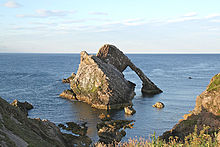
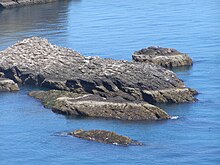
- Solway Firth: Inch
- North coast (from west to east): Stac an Dunain, Duslic, Stack Clò Kearvaig, An Garbh-eilean, Na Glas Leacan, Eilean Dubh, Clach Bheag na Faraid, Clach Mhòr na Faraid, Àigeach, Eilean Polsain, Boursa Island, Glas-eilean Mòr, Garbh-eilean, Wester Clett, Middle Clett, Easter Clett, Little Clett, Clett.
- East coast:
- North Moray Firth (from north to south): The Knee, Stacks of Duncansby, Stack o' Brough, South Stack, The Stacks, Eilean na h-Aibhne,[57] Three Kings.[58]
- South Moray Firth (from west to east): Covesea Skerries, Halliman Skerries, Boar's Head Rock, West Muck, East Muck, Craigenroan, Bow Fiddle Rock, Collie Rocks, Craigandargity.
- Kinnaird Head to the Bullers of Buchan: The Ron, The Skerry, Miekle Mackie, Miekle Donnon, Little Donnon, Craig Snow, Meikle Dumeath, Little Dumeath.
- Bullers of Buchan to Girdle Ness: Dunbuy, The Donnons, Skellyis of Harrol.
- Girdle Ness to Buddon Ness: Craiglethy, Craigmaroinn, May Craig.
Other than Mugdrum in the Firth of Tay and the Islands of the Forth there are no genuine islands on the east coast of Scotland south of Buddon Ness.[citation needed]
Tidally exposed islets and skerries
There are various smaller islets and skerries in the seas surrounding the mainland of Scotland that are only exposed at lower stages of the tide. Craiglethy is part of the Fowlsheugh nature reserve. The Three Kings, off the coast of Easter Ross near Balintore, is also known as Creag Harail or Harold's Rock and called The King's Sons in the New Statistical Account of Scotland. According to legend, three sons of a Danish prince, sailing to avenge their sister's wrongs, were wrecked here and gave these rocks their collective name. Their graves were marked by the sculptured stones of Nigg, Shandwick and Hilton of Cadboll. Another story has their burial at Nigg Rocks below the North Sutor.[59]
See also
- List of Outer Hebrides
- Inner Hebrides
- List of Orkney islands
- List of Shetland islands
- Islands of the Clyde
- Islands of the Forth
- List of islands of Scotland
- Scottish island names
- List of islands of the British Isles
- Fair Isle in Shetland, the most remote inhabited island in the United Kingdom, which lies 38 kilometres (24 mi) south-west of the Mainland.
- Foula in Shetland, which lies 22 kilometres (14 mi) west of the Mainland.
References and footnotes
- General references
- General Register Office for Scotland (28 November 2003) Scotland's Census 2001 – Occasional Paper No 10: Statistics for Inhabited Islands. Retrieved 26 February 2012.
- Fisher, James (1956) Rockall. London. Geoffrey Bles.
- Fleming, Andrew (2005) St Kilda and the Wider World: Tales of an Iconic Island. Windgather Press. ISBN 1-905119-00-3
- Haswell-Smith, Hamish. (2004) The Scottish Islands. Edinburgh. Canongate. ISBN 1-84195-454-3
- Keay, J. & Keay, J. (1994) Collins Encyclopaedia of Scotland. London. HarperCollins.
- Mac an Tàilleir, Iain (2003) Ainmean-àite/Placenames. (pdf) Pàrlamaid na h-Alba. Retrieved 26 August 2012.
- Maclean, Charles (1977) Island on the Edge of the World: the Story of St. Kilda. Edinburgh. Canongate. ISBN 0-903937-41-7
- Nicholson, Christopher. (1995) Rock Lighthouses of Britain: The End of an Era? Caithness. Whittles. ISBN 1-870325-41-9
- Ordnance Survey (2009) "Get-a-map". Retrieved 6–10 February 2010.
- Quine, David (2000) St Kilda. Grantown-on-Spey. Colin Baxter Island Guides. ISBN 1-84107-008-4
- Rackwitz, Martin (2007) Travels to Terra Incognita: The Scottish Highlands and Hebrides in Early Modern Travellers' Accounts C. 1600 to 1800. Waxmann Verlag. ISBN 978-3-8309-1699-4
- Watson, William John (1976) "Place Names of Ross and Cromarty" Ross & Cromarty Heritage Society. ISBN 978-1-4097-6657-5
- Notes
- Citations